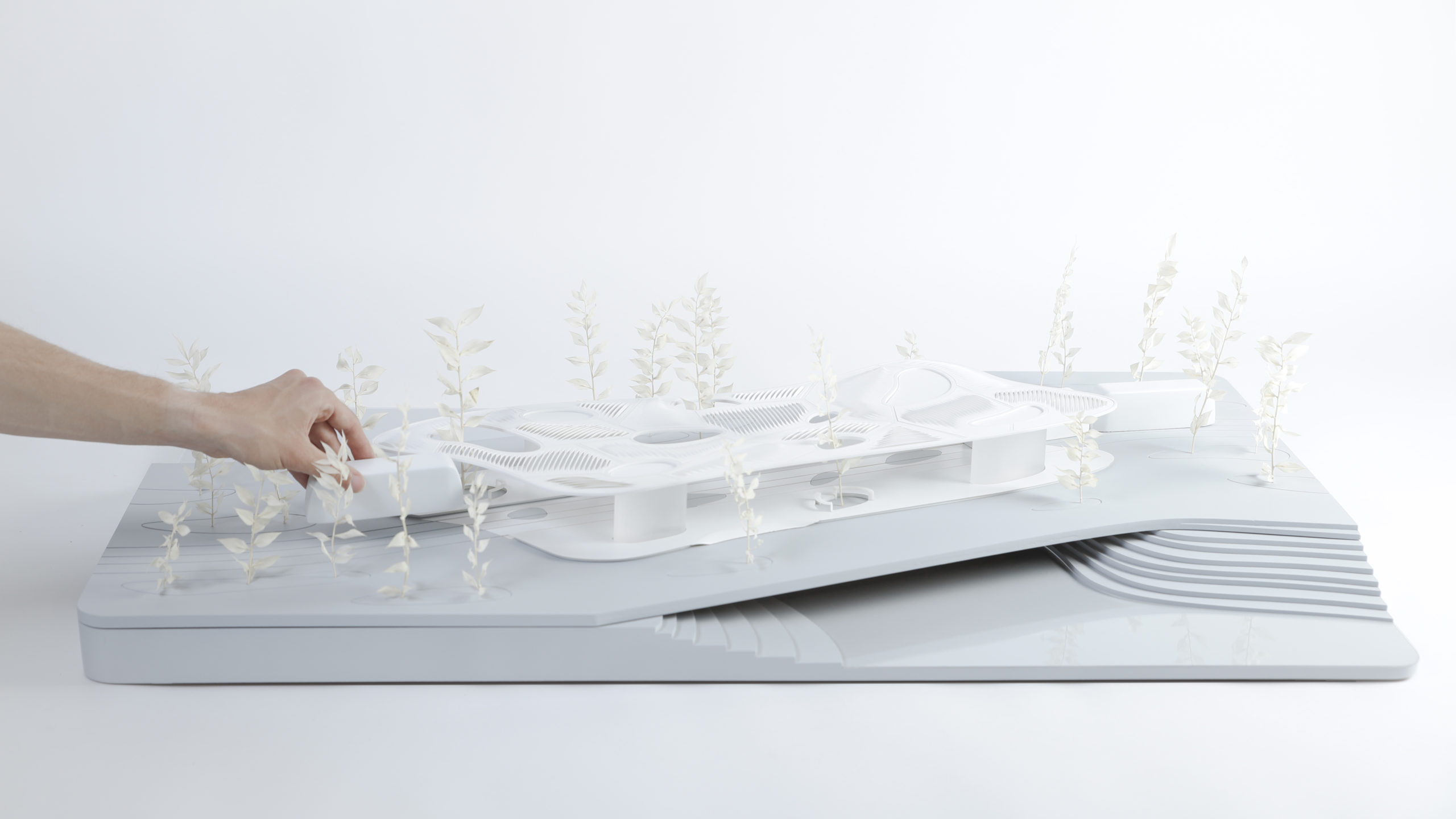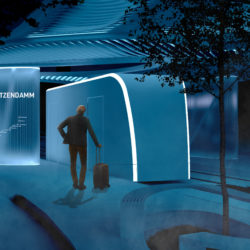Tram Station For Kiel
Description
A tram station that can be understood as a core element of a holistic mobility system. However, it is more than just a tram station. It is a story of visions, of technology and nature and of the mobility of the future.What is the Topic?
The mobility of the future must be as flexible as modern man is. It must be able to adapt. Individuality is becoming a challenge for the transport system and at the same time it offers potential for a design that is close to the user and recognises the user as the most important element within the system. Structural differences between day and night play a special role here. It is also important to pick up the passenger and to inspire them for the future. If new and sustainable technology is to establish itself and be accepted by people, this must not be done by prohibitions and regulations. It is about enthusiasm and experience. The experience of the future is the thought-provoking impetus for a new awareness and efforts to progress.
Why does it look like this?
My design mainly consists of a combination of technology and nature, so I looked at living structures and developed new ideas for my design from their forms and functions. Especially in the gills of the fish I found a living structure. It inspired me to create a lamella structure in the roof. The lamella let the Tram Station breathe. They react to nature and open and close in appropriate weather conditions. Depending on where you are, you can look through the lamella or they close the view to the sky. The already mentioned contrast of day and night is also reflected in the design of the Tram Station. During the day we see transparent elements, enclosed and in interaction with nature, while at night the people are surrounded by an atmosphere that is mainly influenced by technology.
What is special?
With my project I want to tell a story in which people are involved. It should serve as an argument to look forward to the change with excitement and be inspired. People come to the tram station to be taken along by the electric power. A place has been created that is not to be seen as the final stop, but as a transition into the future.
What is new?
Above all, the flexibility for passengers was highlighted in my concept. This requires a completely new understanding of a holistic mobility system. So there are neither classic stops nor a classic tram. Instead of large and heavy trains, my concept envisages individual, autonomous "tram pods". They join together during the day and run according to a normal timetable. At night, the tram pods decouple and only a few pods have to be in use only when they are really needed, due to the lower demand. If there is a need for mobility during the night, the person goes to the tram station. Here you can now call a single Tram Pod to the stop and stay flexible. In this way, the passenger is directly involved in the system and becomes an important actor. Through a new distribution of areas, I also define a new space in which speeds are harmonized and the pedestrian is not so much degraded as highlighted. By displacing the cars, a space never before experienced is created. In order to take out speed and still not to interrupt the flow, the tracks of the different road users wind their way through nature and through the city. Individual islands of nature run like small air bubbles through the system and vitalize the space. Nature keeps the technology protected in its system and in this way creates a mindset for sustainable mobility among the inhabitants. Roads are no longer seen as such, but rather as a space of mobility and progress via technology and nature.




